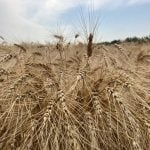MarketsFarm – While significant price movement for pulses has been hard to find as 2022 approaches, major impacts can still be felt when it comes to supply chains.
“This time of year, it is very quiet for farmers, processors, exporters, shipping and everything overall,” said Lionel Ector, president of Diefenbaker Spice & Pulse (DSP) in Elbow, Sask. “Transport and trade are making things difficult for those customers of ours and getting orders out in a timely manner and I think that is what’s holding prices back a bit. No one’s been able to take a forward position, even if they wanted to because of logistics.”
Read Also

U.S. livestock: Feeder cattle hit contract highs on tight supply
Chicago | Reuters – All Chicago Mercantile Exchange feeder cattle futures and most live cattle futures hit contract highs on…
Ector also mentioned that the seasonality of soybeans and corn, as well as dry weather in South America will also bring support to pulse prices.
Meanwhile, cold weather blanketing the Prairie provinces, with wind chills falling below minus-40 degrees Celsius, can also affect pulse prices.
“(The cold) is blocking a lot of capacity in the processing plants. Freight and logistics, getting (crop) from the farm and the logistics to get it out. Definitely, cold weather has an impact,” Ector added.
Chickpeas are currently trading at around 52 cents per pound and red lentils are between 40 and 45 cents/lb, according to Melody Ector, DSP vice-president.
















